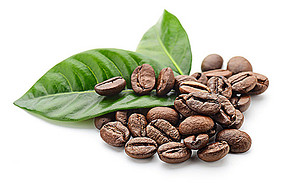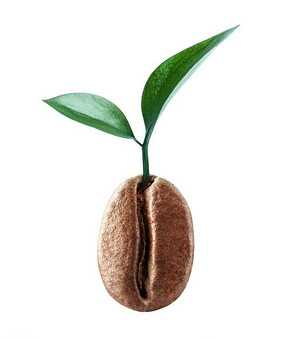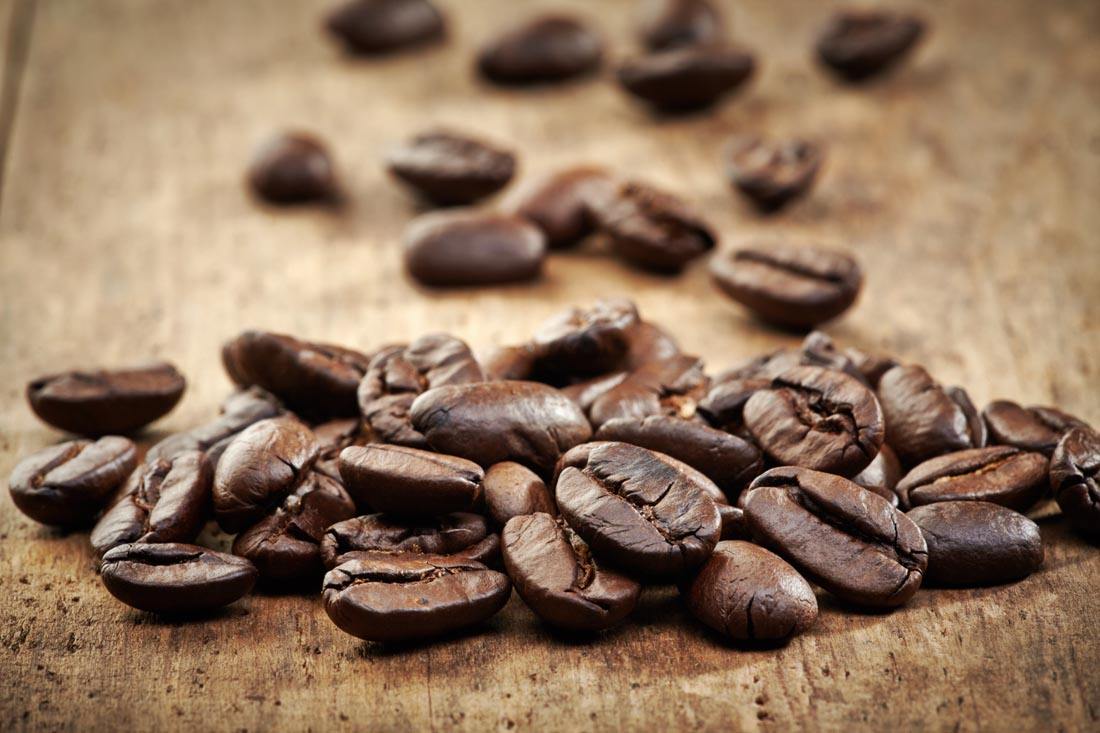The grade of caffeine in Ethiopia
Follow the caf é (Wechat official account vdailycom) and found that Beautiful Cafe opened a small shop of its own.
Background
Ethiopia's coffee bean grading standards are supported by the American Professional Coffee Association. But remember, Ethiopia is a coffee producer, so why can't Ethiopia set its own standards?
-in 2008 Ethiopia held an official coffee trading centre (most coffee production was purchased by exporters before the trading centre was held).
-the transaction process is briefly described as follows:
1. Coffee growers harvest their production.
two。 Coffee growers provide beans to their community cooperatives.
3. Cooperate to sell coffee to traders.
4. Traders take coffee to coffee processing (whether wet or dry).
5. Traders store processed beans in warehouses (dried coffee beans or parchment coffee).
6. Coffee is sent to the zhengfu agency for graded pricing.

7. Traders take coffee samples and certification and grading documents to distributors and exporters in the capital.
8. After taking samples at random, the distributor or exporter will pack the coffee according to their own brand.
9. After business negotiations, the distributor / exporter takes the dried coffee beans to the factory for further processing.
10. The exporter sends the processed beans to the zhengfu agency for export evaluation. A rating document with coffee name and grade will be issued as certification, such as level 2 Cheffe.
The above steps are only brief steps in the course of the transaction. There may be other trading steps that can be long or short, for example, cooperatives can act as exporters.
Ethiopian coffee beans are usually named after their origin, similar to wines from France named after Bordeux.
Note: Cheffe is a small coffee producer in Sidamo. The unique coffee produced here, whose characteristics make it one of the top products in Sidamo, is named differently from other parts of Africa, including grade names. For example, coffee in Kenya and Tanzania is graded as Kenya AA and Tanzania AAA. Why? The reasons are as follows.
-many technical terms are used in coffee grading, such as level 2 Yirga Cheffe and level 3 Harar. Levels 2 and 3 here do not refer to the quality of coffee, but instead to how they handle a particular coffee:
Washing treatment technology: grade 1, level 2
Drying treatment technology: grade 3, level 4, level 5 and level 1
A) Grade 1 coffee is divided into washing and drying processes, because level 1 is considered to be a high quality grade, regardless of its processing technology, is also an excellent cup of coffee.
B) the lowest grade of coffee for Cheffe and Sidamo is grade 4 during drying, unlike Djimmah, which has five levels ranging from grade 1 to grade 5. However, Ethiopian exporters may package grade 4 Cheffe as a level 4 Sidamo brand to maintain the high reputation of Cheffe coffee.
C) Coffee beans of the same grade, such as grade 2 Limu, may contain good and bad beans. The reasons for doing so will be further explained below.
D) there is a very high demand for perfect coffee beans, but on the other hand, the supply of level 1 (drying, washing) is also very low. And grade 1 beans require a lot of production costs, and only a few companies can provide grade 1 beans.
E) it is a fact that coffee beans without grade 2 Cheffe and grade 2 Sidamo are dried.
Coffee grading of parchment (dried beans)
In step 6 of the above brief transaction step, parchment coffee must be certified before it can be distributed. However, this certification step is for domestic sales only, and it has no export purpose. General requirements: during the drying process, the moisture content of coffee beans must not exceed 11.5%. At least 85% of coffee beans must be size 14 after screening. The unattractive appearance of Ethiopian coffee is due to the uneven size of beans, which may be 14, 15, 16, 17, 18 and so on.
The rating of parchment coffee ranges from 1 to 9 (below).
However, how to grade at this point is completely different from the Cheffe of level 2 and the Harar rating of level 3, because it is sold domestically, not exported.
Scoring criteria: original value (physical value) 40 points, cup quality value 60 points, a total of 100 points.
Original value: defect 20 points, shape 10 points, color 5 points, aroma 5 points. Cup quality value factors: transparency and clarity 15 points, acidity 15 points, consistency 15 points, taste 15 points.
If other coffee features are interesting, the American Professional Coffee Association after cup testing for specific features will be divided into grades 1, 2, 4 and 3. Once coffee is rated as a special coffee, it will give it a new name. If the opportunity arises, I will explain the detailed naming process in the next article.
Note: the above is the quality evaluation of roasted coffee beans.
After receiving the coffee beans from the dealer, the beans are further processed in step 9. This step can be divided into two methods: a) mixing other smaller coffee beans to produce a single variety of beans, and b) mixing different grades of parchment coffee beans. However the second method has a significant impact on the quality of coffee.
Parchment coffee grades (1-9 and UG) are explained in the following example of Cheffe Coffee:
David received an order for 20 tons of grade 2 Cheffe coffee beans. Then he bought 20 tons of dried coffee beans from a businessman, but it was almost impossible to buy 20 tons of coffee beans from one source. This means that David will have mixed grades of Cheffe coffee beans. Suppose he now has:
5 tons (25%) of grade 1 coffee beans from source A.
2 tons (10%) of grade 2 coffee beans from source B.
10 tons (50%) of grade 3 coffee beans from source C; and
3 tons (15%) of grade 4 coffee beans from source D.
David then further processed and graded the beans through his factory and zhengfu agency. He can only export to his customers the documents he has received to prove that his coffee beans are Grade 2 Cheffe.
Now, let's try another example.
John received the same order for grade 2 Cheffe coffee beans. He ordered parchment coffee beans from four sources as follows:.
1 ton (5%) of grade 1 coffee beans from source E.
1 ton (5%) of grade 2 coffee beans from source F
10 tons (50%) of grade 3 coffee beans from source G
8 tons (40%) of grade 4 coffee beans from source H
Interestingly, however, John also received a level 2 certification of Cheffe coffee beans.
You may have realized that although exporters on both sides also have grade 2 Cheffe coffee beans, David's products are of higher quality than John. I'm not suggesting that John use the product system to build its own advantage, because he may sell his coffee beans at a lower price. It ultimately involves the fact that high-quality coffee has a higher cost, which actually applies to other Sidamo,Djimmah like Ethiopian coffee, as well as Lekempti.
Conclusion
1. In addition to farming methods steps 4 and 9 also have a significant impact on the quality of coffee.
two。 Step 9 is very important. From visiting a factory, I found that subtle aspects such as employee braking can affect the coffee screening process.
3. The principle of "every penny for every penny" may be true. However, step 9 imports are not controlled by importers and exporters will never tell you the proportion of coffee beans from different sources. Only honest and conscientious exporters can be found!
4. Ethiopian coffee grades are different for parchment beans and export beans, but they also have some connections.
5. As far as I know, the Ethiopian coffee grading standard is probably the most systematic in Africa.
6. When coffee beans from different origins are mixed together, the problem of traceability will arise, but there is a solution, which I will explain next time.
7. Many African exporters export grade 1 and grade 2 parchment coffee beans (high-quality coffee) as grade 3 coffee beans because undefective coffee beans are very rare.
Important Notice :
前街咖啡 FrontStreet Coffee has moved to new addredd:
FrontStreet Coffee Address: 315,Donghua East Road,GuangZhou
Tel:020 38364473
- Prev

Ethiopia: Arabica's genetic Treasure House
Following Ka Pai (Wechat official account vdailycom) found that the Beautiful Cafe opened a small shop of its own, the Federal Democratic Republic of Ethiopia (English: The Federal Democratic Republic of Ethiopia), abbreviated as Ethiopia or Ethiopia, a country located in northeast Africa. It is bordered by Djibouti and Somalia in the east and Sudan in the west.
- Next

Introduction to Coffee Climatic cultivation in Ethiopia
Following Kaiping (official Wechat account vdailycom) has found that climate change may cause about half of Ethiopia's coffee-growing areas to become unsuitable for coffee cultivation by the end of the century. However, the study report is not all bad news, the researchers also proposed that through the transfer of coffee producing areas, afforestation and forest protection, the total area of coffee cultivation is expected to expand
Related
- Detailed explanation of Jadeite planting Land in Panamanian Jadeite Manor introduction to the grading system of Jadeite competitive bidding, Red bid, Green bid and Rose Summer
- Story of Coffee planting in Brenka region of Costa Rica Stonehenge Manor anaerobic heavy honey treatment of flavor mouth
- What's on the barrel of Blue Mountain Coffee beans?
- Can American coffee also pull flowers? How to use hot American style to pull out a good-looking pattern?
- Can you make a cold extract with coffee beans? What is the right proportion for cold-extracted coffee formula?
- Indonesian PWN Gold Mandrine Coffee Origin Features Flavor How to Chong? Mandolin coffee is American.
- A brief introduction to the flavor characteristics of Brazilian yellow bourbon coffee beans
- What is the effect of different water quality on the flavor of cold-extracted coffee? What kind of water is best for brewing coffee?
- Why do you think of Rose Summer whenever you mention Panamanian coffee?
- Introduction to the characteristics of authentic blue mountain coffee bean producing areas? What is the CIB Coffee Authority in Jamaica?

